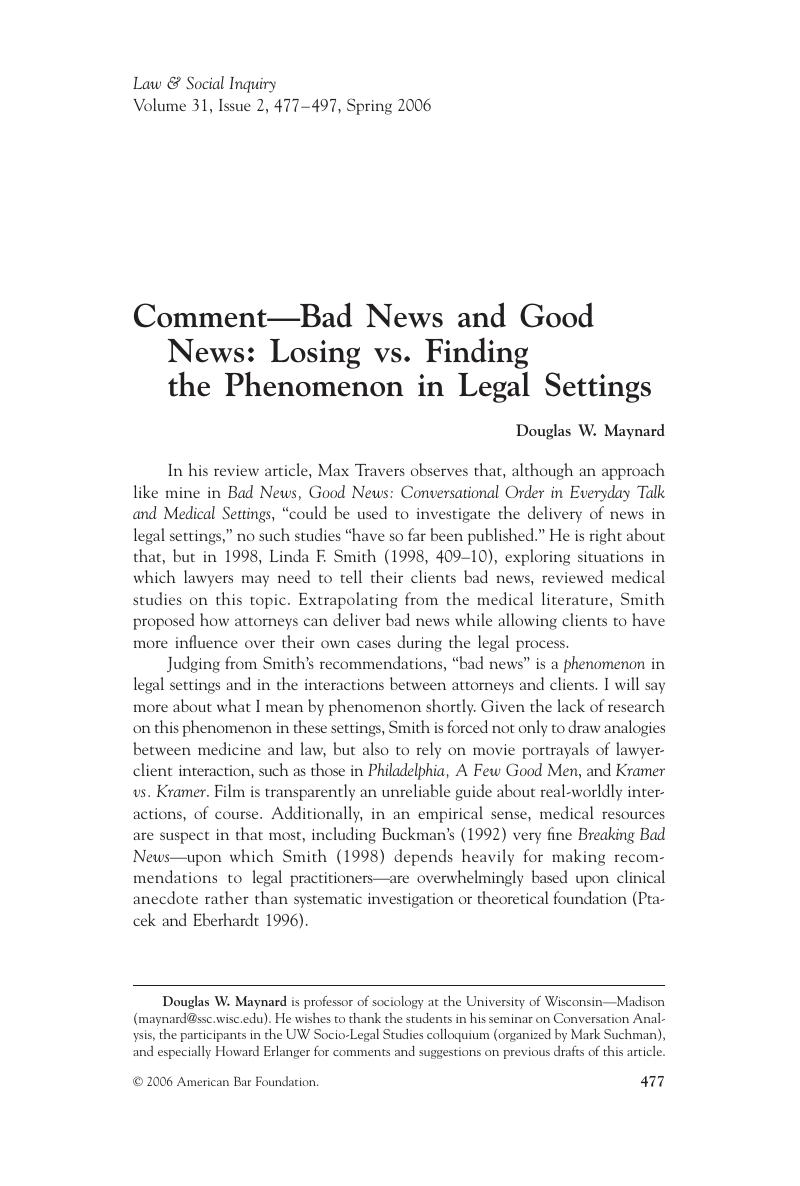Crossref Citations
This article has been cited by the following publications. This list is generated based on data provided by Crossref.
Mertz, Elizabeth
2007.
Semiotic Anthropology.
Annual Review of Anthropology,
Vol. 36,
Issue. 1,
p.
337.
Matoesian, Gregory
2012.
The Encyclopedia of Applied Linguistics.
Roach Anleu, Sharyn
and
Mack, Kathy
2015.
Performing Authority: Communicating Judicial Decisions in Lower Criminal Courts.
Journal of Sociology,
Vol. 51,
Issue. 4,
p.
1052.
Kim, Jeonghun
Song, Yeongeun
Jin, Yunseon
and
kwon, Ohbyung
2015.
Applying Text Mining to Identify Factors Which Affect Likes and Dislikes of Online News Comments.
Journal of the Korea society of IT services,
Vol. 14,
Issue. 2,
p.
159.
Matoesian, Gregory
and
Gilbert, Kristin
2016.
Multifunctionality of hand gestures and material conduct during closing argument.
Gesture,
Vol. 15,
Issue. 1,
p.
79.
Lopes, Ana Paula
2023.
EU Cohesion Policy Implementation - Evaluation Challenges and Opportunities.
p.
177.



